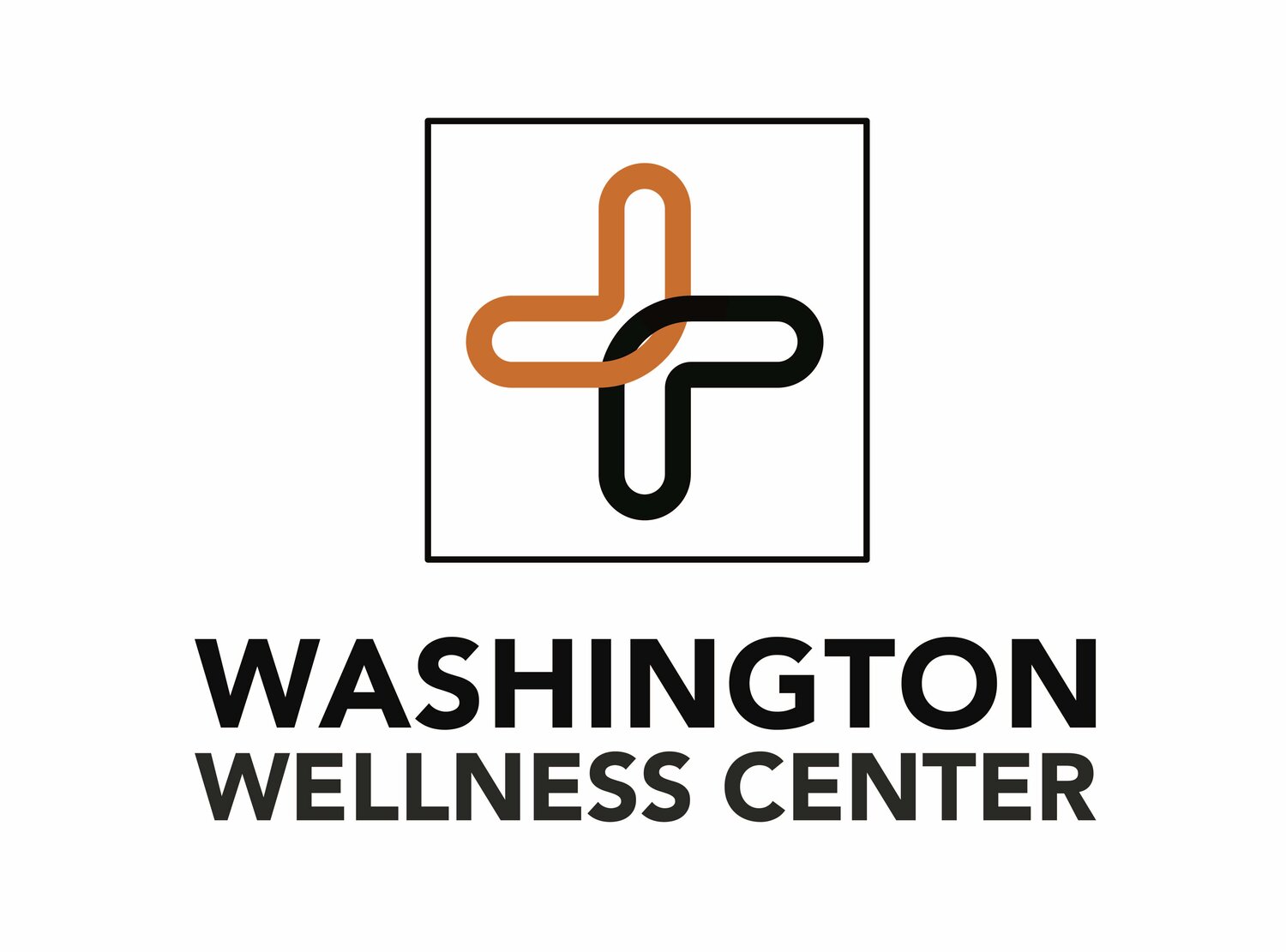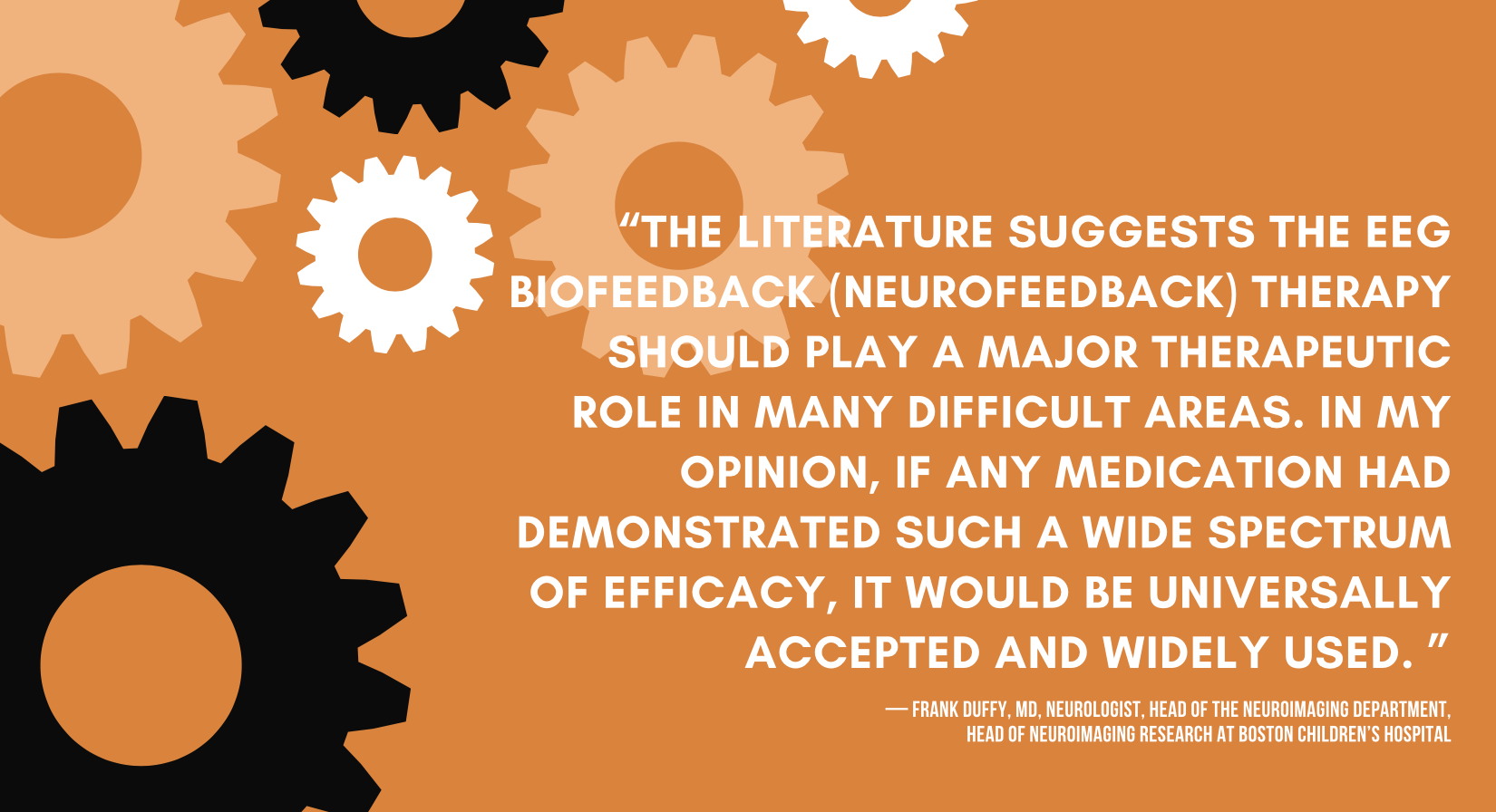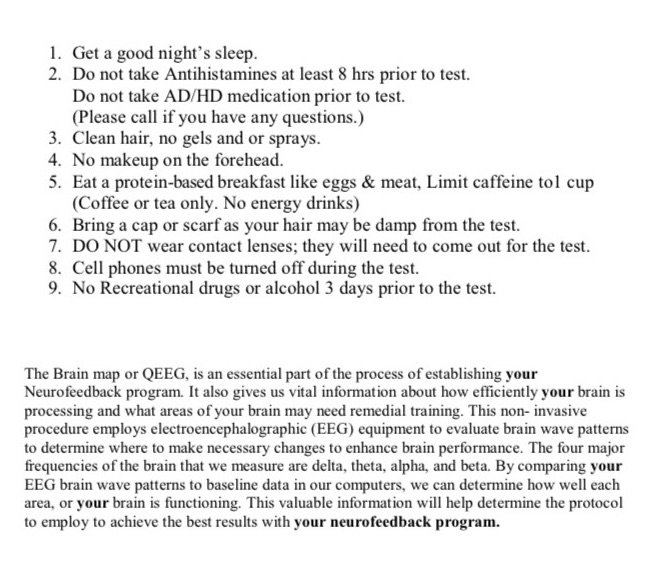UNIQUE, DRUGLESS, NON-INVASIVE BRAIN TRAINING
Think of neurofeedback like fitness for your brain, but more like exercising with a personal trainer. You can't just exercise once and expect results, you have to have some consistency. You also don't need to be an ironman triathlete. Any exercise is "good", but a personal trainer can tell you exactly what YOU need.
WHAT IS NEUROFEEDBACK?
Neurofeedback literally means “brain” and “input,” where the brain’s activity is measured and a customized program is designed to make your brain stronger.
Our neurofeedback brain mapping technology uses Quantitative Electroencephalogram (qEEG) to monitor brainwaves, the software looks for irregularities in brainwave patterns, then produces an customized exercise program (neurofeedback program) that is designed to correct the irregular patterns and guide the brainwave back into a healthy pattern. With repetition of this process over time, the brain will learn to stay in healthy patterns without the aid of the computer. The result is an improvement in brain regulation, which can reduce or improve most neurological symptoms.
WHAT TYPE OF INPUT IS USED?
The neurofeedback source varies based on the system used, but it usually involves audio or video of the client’s choosing. The process is so easy, a patient can actually get better just by listening to their favorite music or watching their favorite videos, but the music or video responds to their brain wavelengths. The process is non-invasive, requires no drugs, and is pain-free.
WHO COULD BENEFIT?
Neurofeedback can work on anyone, no matter the age. All that is required is the ability to focus on the auto or visual stimulation. Any neurological condition that involved irregular brainwaves can be targeted and improved with neurofeedback. Conditions are not limited to, but include:
ADD
ADHD
ADDICTION
ANGER MANAGEMENT
ANXIETY
AUTISM
BIPOLAR DISORDER
BRAIN INJURY
CHRONIC PAIN
DEPRESSION
DYSLEXIA
EPILEPSY/SEIZURES
FIBROMYALGIA
LYME DISEASE
MEMORY LOSS
MIGRAINES
OCD
TOURETTE’S
PARKINSON’S
STRESS
PTSD
SCHIZOPHRENIA
STROKE
SUBSTANCE ABUSE
ALZHEIMER’S DISEASE
WHAT ARE BRAINWAVES? HOW DO THEY AFFECT ME?
Neurofeedback targets the four primary brainwaves (Alpha, Beta, Delta, Theta). Each of these brainwaves is responsible for regulating the brain functions involved in active and subconscious regulation of your body. Take a look at the diagram below:
DELTA brainwaves are associated with deep, dreamless sleep and regeneration. Delta brainwaves occur when you are asleep and are responsible for healing the body.
THETA brainwaves are associated with light sleep or extreme relaxation. When your subconscious takes over you start producing Theta brainwaves.
ALPHA brainwaves occur when you are awake but relaxed and not processing much information. When you first get up and right before you fall asleep, you are generating Alpha waves, as well as when you close your eyes to rest.
BETA brainwaves are associated with the mental state most people are in during the day and most of their waking lives. When you are alert and focused, you are producing Beta brainwaves.
While each of these brainwaves is responsive for different body functions, they all are equally important to your health and well-being. Researchers have known for decades the correlation between Irregular brainwaves and common neurological conditions. Neurofeedback’s purpose is to directly target these irregular brainwaves and restore them to normal ranges.
Neurofeedback is safe, effective, and relatively quick - each session takes only 30-60 mins, but it requires repetition.
BRAIN MAPPING
Neurofeedback’s sophisticated tool that reveals what’s really going on inside your brain
The brain map, often referred to as a qEEG, is one of the most vital diagnostic tools available in the field of neurofeedback for use with people who have brain-based conditions.
WHY HAVE A BRAIN MAP?
The ability to “map” the brain provides far more insight into where the problem is coming from in the brain versus just answering questions on a form. What “sounds like” one thing in a verbal or written questionnaire can actually be identified as something completely different when patterns of activity from the brain map are analyzed. A wrong diagnosis based on just asking questions means there’s a risk that the recommended treatment, which in many cases involves powerful drugs, could be totally inappropriate and ineffective.
MAJOR BENEFITS OF A BRAIN MAP:
Assists in identifying problems with brain timing
Pinpoints specific areas of the brain that are not functioning optimally that can impact mood, behavior, attention, sleep, learning and more
Helps indicate which interventions and neurofeedback protocols to target
Provides information that can suggest which class of medications is appropriate or not suitable to the problem. (This knowledge can help reduce prescribing by trial and error)
Helps explain why remedies tried up to that point haven’t worked
People frequently exclaim that the information we uncover describes their struggles or those of their child remarkably well. They often comment that tests by behavioral or medical specialists, for which they had laid out thousands of dollars, didn’t turn up what was really going on the way the brain map did.
HOW IS A qEEG BRAIN MAP CONDUCTED?
Conducted in our office, the entire process takes about 1 hour and 15 minutes. It’s comfortable and painless but does result in a “bad hair” day.
The brain mapping process looks very similar to what a neurologist does when conducting a conventional EEG. However, a qEEG brain map analyzes very different information than what the neurologist does.
Take a look at a great video explanation done by Mike Cohen.
QEEG/BRAIN MAP PREPARATION INSTRUCTIONS:
Looking for something else? Have questions? Message us directly by filling out the form below!










